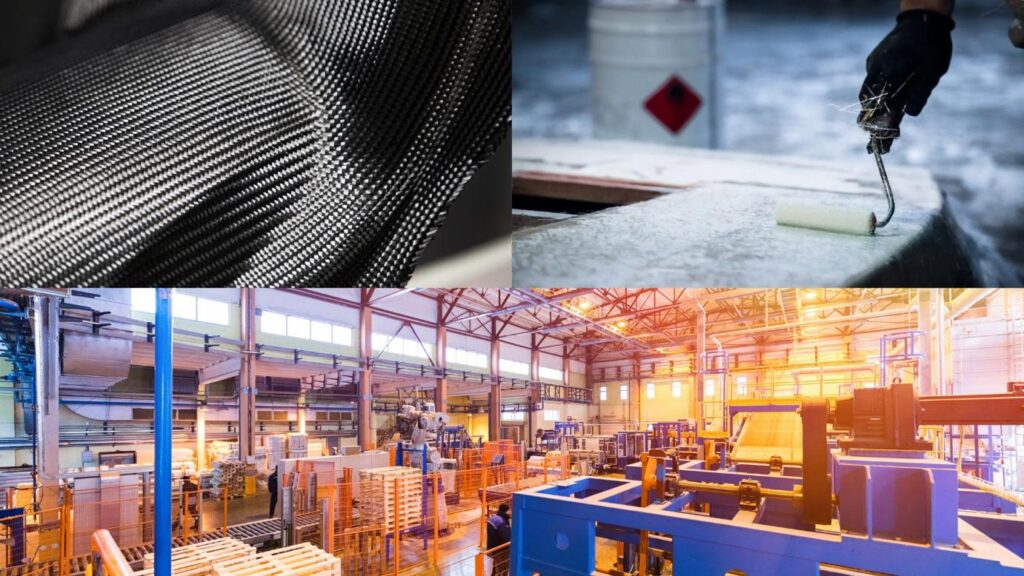
Innovation and Strategy for Composite Materials – Innovellix
Composite materials have revolutionized numerous industries, offering exceptional strength, durability, and versatility. These materials, consisting of two or more distinct components, combine to create unique properties that surpass those of traditional materials. In a world driven by constant technological advancements, innovation and strategy play a crucial role in unlocking the full potential of composite materials. In this article, we will explore the significance of innovation in the composite materials industry and discuss effective strategies for driving progress.
Composite materials encompass a wide range of substances, including fiber-reinforced polymers, carbon composites, and metal matrix composites. They exhibit superior properties, such as high strength-to-weight ratio, corrosion resistance, and design flexibility, making them indispensable in various sectors. However, to harness their full potential, continuous innovation and strategic approaches are vital.
Understanding Composite Materials
Composite materials are engineered combinations of two or more constituents, typically a matrix material and reinforcing fibers or particles. The matrix material holds the fibers or particles together, providing a supportive structure. This synergy creates unique properties, combining the best characteristics of each component. These materials find applications in industries such as aerospace, automotive, construction, and sports equipment.
The Need for Innovation
The composite materials industry faces several challenges, including high production costs, limited scalability, and regulatory requirements. Innovation acts as a catalyst for overcoming these obstacles. By introducing novel ideas, processes, and technologies, innovation drives improvements in material performance, production efficiency, and overall sustainability.
Innovative approaches also enhance the competitive edge of companies operating in the composite materials sector. Through advancements in materials science, manufacturing techniques, and product design, organizations can develop cutting-edge solutions that meet the evolving demands of their customers and the market.
Key Strategies for Composite Materials Innovation
To foster innovation in composite materials, several key strategies should be considered:
- Research and development (R&D): Investing in R&D allows companies to explore new materials, manufacturing techniques, and applications. By dedicating resources to research, organizations can stay ahead of the curve and push the boundaries of what is possible with composite materials.
- Collaboration and partnerships: Collaboration with industry experts, research institutions, and other stakeholders fosters knowledge sharing, accelerates innovation, and facilitates access to specialized resources. Partnerships enable organizations to combine their strengths, pool expertise, and tackle complex challenges collectively.
- Continuous improvement and optimization: Embracing a culture of continuous improvement ensures that existing processes and products are refined and optimized over time. This iterative approach promotes efficiency, reduces costs, and opens up opportunities for incremental innovations.
- Adoption of emerging technologies: Staying informed about emerging technologies, such as additive manufacturing, nanomaterials, and artificial intelligence, allows organizations to leverage these advancements in their innovation efforts. Integration of cutting-edge technologies can lead to breakthroughs in material performance and production efficiency.
Innovations in Composite Materials
The composite materials industry has witnessed remarkable innovations in recent years. These advancements have contributed to the development of novel materials and manufacturing techniques, pushing the boundaries of what is achievable. Some notable innovations include:
Lightweight and High-Strength Materials
The pursuit of lightweight materials with exceptional strength is a key focus in many industries. Composite materials, such as carbon fiber composites, offer an excellent strength-to-weight ratio, making them ideal for aerospace applications, sports equipment, and automotive components. The development of new fiber-reinforced polymers and advanced composites further enhances performance while reducing weight.
Advanced Manufacturing Techniques
Innovations in manufacturing techniques have revolutionized the production of composite materials. Automated fiber placement (AFP) and automated tape laying (ATL) enable precise and rapid placement of fibers, enhancing consistency and reducing labor costs. Additive manufacturing, or 3D printing, has also found its way into the composite materials industry, allowing for complex geometries and customization.
Sustainability and Eco-Friendly Solutions
With growing environmental concerns, sustainability has become a significant focus for composite materials. Innovations in recycling and waste reduction methods, bio-based resins, and renewable energy sources for manufacturing processes contribute to a greener and more sustainable industry. These advancements align with the global shift towards a circular economy and reduced environmental impact.
Integration of Smart Functionalities
Composite materials now offer more than just physical strength. By incorporating sensors, actuators, and smart materials, composites can provide additional functionalities such as structural health monitoring, energy harvesting, and adaptive responses. These smart composite systems have applications in structural engineering, aerospace, and the Internet of Things (IoT).
Implementing an Effective Strategy
To leverage the benefits of innovation, organizations must implement an effective strategy. Here are some key steps to consider:
- Setting clear goals and objectives: Define the desired outcomes and establish specific goals for innovation within the organization. This clarity ensures that efforts align with strategic priorities.
- Creating a culture of innovation: Foster a work environment that encourages creativity, experimentation, and open communication. Empower employees to share ideas, take risks, and learn from failures. Celebrate and recognize innovative contributions.
- Allocating resources and investments: Provide adequate resources, funding, and time for research, development, and experimentation. Create dedicated teams or innovation labs to focus on driving advancements in composite materials.
- Monitoring and evaluating progress: Regularly assess the effectiveness of innovation initiatives and projects. Monitor key performance indicators (KPIs) to measure the impact and identify areas for improvement. Learn from successes and failures to refine future strategies.
Case Studies of Successful Innovations
To illustrate the practical applications of composite materials innovation, here are a few notable case studies:
- Aerospace and Aviation Industry: Composite materials have revolutionized aircraft design, enabling lighter and more fuel-efficient structures. The Boeing 787 Dreamliner utilizes carbon fiber composites extensively, resulting in improved fuel economy and reduced emissions.
- Automotive Industry: Car manufacturers are increasingly incorporating composite materials in vehicle components to reduce weight while maintaining safety standards. For example, the Tesla Model S employs aluminum and carbon fiber composites, enhancing performance and extending range.
- Renewable Energy Sector: Composite materials play a crucial role in wind turbine blades, enabling larger sizes and improved energy capture. Innovations in composite materials have contributed to the growth of renewable energy by enhancing the efficiency and reliability of wind power.
- Construction and Infrastructure: Composite materials offer durability, corrosion resistance, and design flexibility in construction projects. Bridges, buildings, and infrastructure components benefit from composite reinforcements, reducing maintenance costs and extending lifespan.
Overcoming Challenges and Future Outlook
While composite materials offer immense potential, several challenges need to be addressed for widespread adoption and further innovation. These challenges include regulatory compliance, cost-effectiveness, scalability of production processes, and recycling methods. However, advancements in material science, manufacturing techniques, and increased industry collaboration are expected to drive solutions to these challenges.
The future of composite materials looks promising, with ongoing research and development efforts focusing on enhancing properties, reducing costs, and exploring new applications. From aerospace to healthcare, automotive to renewable energy, composite materials are poised to shape industries and drive progress in the coming years.
Innovation and strategic thinking are vital for unlocking the full potential of composite materials. By embracing a culture of innovation, investing in research and development, and adopting emerging technologies, organizations can lead the way in developing novel composite materials and driving industry progress. The continuous pursuit of lightweight, sustainable, and smart composite solutions will revolutionize multiple sectors, providing new possibilities for design, performance, and efficiency.
Frequently Asked Questions (FAQs)
- What are the primary advantages of composite materials? Composite materials offer several advantages, including high strength-to-weight ratio, corrosion resistance, design flexibility, and improved performance in specific applications. They enable lightweight structures, reduce energy consumption, and offer durability and longevity.
- How does innovation contribute to the development of composite materials? Innovation drives advancements in composite materials by introducing new ideas, processes, and technologies. It enhances material performance, production efficiency, sustainability, and the integration of smart functionalities. Innovation also helps overcome industry challenges and fosters competitiveness.
- What are some key challenges faced by the composite materials industry? The composite materials industry faces challenges such as high production costs, limited scalability, regulatory compliance, and recycling methods. Innovations are required to address these challenges and ensure widespread adoption of composite materials.
- How can companies foster a culture of innovation in their organizations? Companies can foster a culture of innovation by encouraging creativity, establishing channels for idea-sharing, providing resources for R&D, promoting experimentation, and embracing a mindset that learns from failures. Recognizing and celebrating innovative contributions also reinforces a culture of innovation.
- What are the potential future applications of composite materials? The future applications of composite materials are vast. They include aerospace and aviation, automotive components, renewable energy infrastructure, healthcare devices, sports equipment, and consumer electronics. As innovations continue, composite materials will find new uses in multiple industries.








